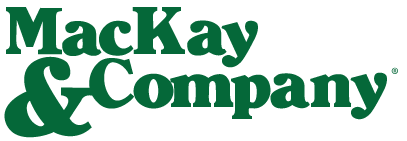(With opposing views on this issue, we thought it a perfect time to look at both sides of this argument)
On the heels of another Heavy Duty Aftermarket Week, the issue of who gets permission to exhibit and to attend again surfaced. For as long as most of us can remember, individuals and other entities with any sort of umbilical relationship to a vehicle producing entity cannot be considered independent, whatever that actually means, and are not invited. However, the lines are becoming more blurred as dealerships are now members of buying groups and these members ARE allowed to participate at HDAW.
What – actually – does “independent” really mean? It apparently doesn’t mean that any company that sells to the original equipment market doesn’t get painted with the “OEM” brush. And it apparently doesn’t mean that any of these same supplier companies that also sell to the aftermarket parts distribution arm of these same OEM companies get the brush treatment as well. Independent means not-affiliated with an OEM, working on the vehicles, but having no direct connection with any vehicle manufacturer – we think.
Everybody in the heavy duty aftermarket – regardless of the shingle hanging out front – is dependent on the OEM side of the business. No argument! We're not our friends from Germany, Sweden, Belleview and elsewhere putting trucks together, there would be no aftermarket. Same for the trailer guys, be it Lafayette, City of Industry or somewhere else. EVERYBODY IN THIS AFTERMARKET BUSINESS IS DEPENDENT; INDEPENDENCE IS A MYTH!
The reality of the heavy duty aftermarket is this: the customer will decide what he buys and where he buys it. Again, no argument! It is up to the individual participants in the aftermarket arena to provide the products, services and support that the customer demands. Yeah, a national network of OEM dealers might have had an advantage over a loose affiliation of “non-OEM distributors” a few years ago – but that’s not the case today. On the other hand, large dealer organizations do have an advantage – the advantage of market share, technical information and technicians receiving higher pay. On the flip side, “Non-OEM distribution” has both the physical coverage, the breadth of product offerings and the brand identification capabilities to match the other guys. And the relationships, for sure, but it is still not easy competing against large dealer organizations. True, “independents” don’t usually get the warranty parts business – but do they really want it, anyway? Warranty work can be a pain in the butt, especially if it’s involved with a major recall; clogged shops, paperwork up the yingyang, unhappy customers – who needs it!
The “sweet spot” in the heavy duty aftermarket occurs long after vehicle and component warranties have expired. For most products and components outside the regular maintenance arena (filtration, etc.), trucks and often trailers are in the hands of the second – and sometimes the third – owner. Research shows that “non-OEM distribution” has proven to do a much better job with this customer than competitive channels.
The reality of the marketplace is that distribution systems with a direct affiliation to original equipment manufacturers are picking up market share from those distribution entities without such a tie. They certainly aren’t stealing it. They have studied what has made “non-OEM affiliated” distribution successful in the past and have successfully initiated programs to capitalize on this. And they have energized their distribution system to capitalize on what has been learned.
It might have been Abraham Lincoln (perhaps the last honest politician from Illinois!) that espoused the philosophy of “keeping your friends close but your enemies closer”. My advice to the guardians of the gates surrounding Heavy Duty Aftermarket Week would be this. You may enjoy being surrounded by your “friends” – but you stand to learn a good deal from your “enemies”. Think about it!
Truck Parts & Service February 2017 Article by Stu MacKay & Molly MacKay Zacker
